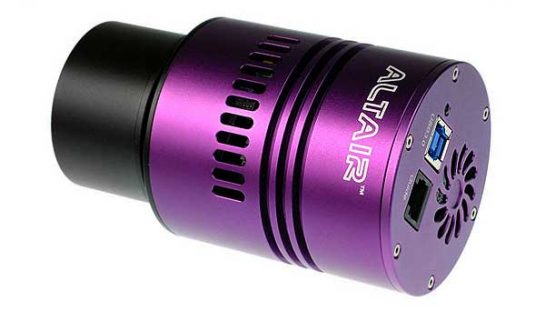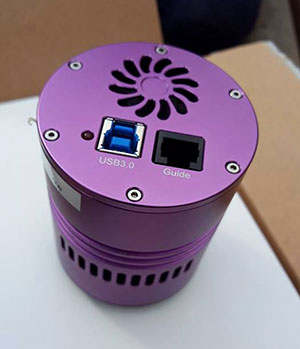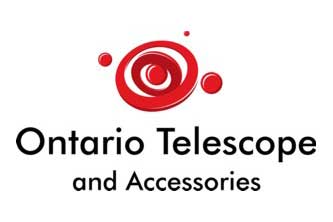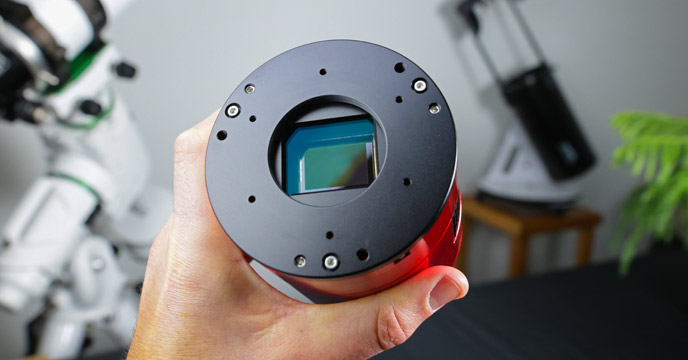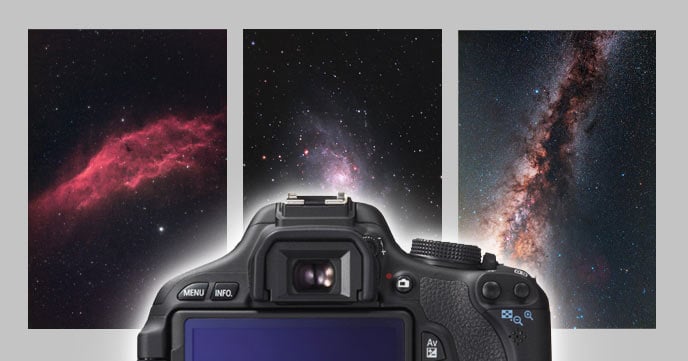The Altair Hypercam 183C – Color CMOS Sensor Camera

I am extremely excited to review a new astronomy camera from Altair Astro, the Hypercam 183C. This is a CMOS color deep sky imaging camera and boasts some impressive astrophotography features out of the box.
I should be receiving the Hypercam as early as next week, and I will be providing a video review of its deep sky imaging capabilities. At under $1000 (CDN), this astronomy camera is a solid contender for those looking for an upgrade to their stock DSLR.
This is an affordable Color CMOS digital camera with impressive astrophotography features.
Thanks to my friends at Ontario Telescope & Accessories, I have been given the opportunity to take some deep sky images using the Hypercam 183C. This Color CMOS CCD Camera will be attached to my Explore Scientific ED102 Telescope for the next month or so.
Update: Read my Full Review with Sample Images
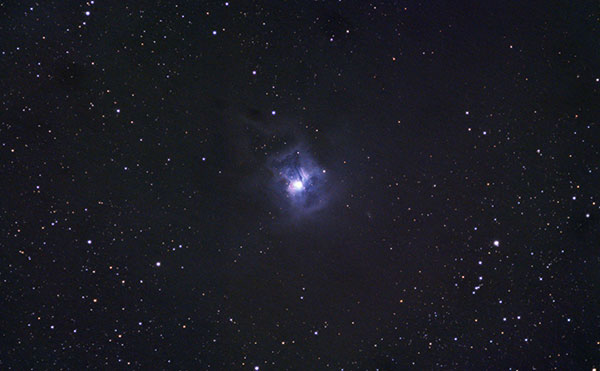
An Affordable DSLR Alternative
Like many of you, I started my astrophotography journey using a DSLR camera. My Canon Rebel was very user-friendly. It was easy enough to start taking photos of the night sky using a DSLR once I had the basics down.
Using a DSLR for astrophotography has its shortcomings, but they are more than capable of producing stunning deep sky photos. The variations of lenses and types of imaging possible mean that I will always shoot with a DSLR, in some way or another.
However, dedicated astronomy cameras such as the Hypercam make the deep sky imaging experience even easier. The precision control of the CMOS sensor is designed for capturing starlight.
After my experience using the ZWO ASI071 one shot color camera, my eyes have been opened to a new world of astrophotography cameras. The abilities of a cooled CCD style camera can completely change the way you approach a night of astrophotography.
The seemingly endless sea of astronomy cameras available now are worth investigating if you are looking to upgrade or shift towards CCD imaging. And that’s where this new color camera from Altair Astro comes in.
Meet the Altair Hypercam 183C
If you follow Altair Astro on Facebook, you’ve probably noticed that their team is continuously adding new products and providing new astrophotography solutions for backyard imagers. So far, I have only seen the Hypercam 183C in use by the talented Gary Palmer on his Facebook Page.
The images Gary has been able to produce using this CMOS camera are promising. He was nice enough to give me a few pointers on using the Hypercam 183C, and I can’t wait to put them into action.
Here are some example photos captured using the Altair Hypercam 183C:
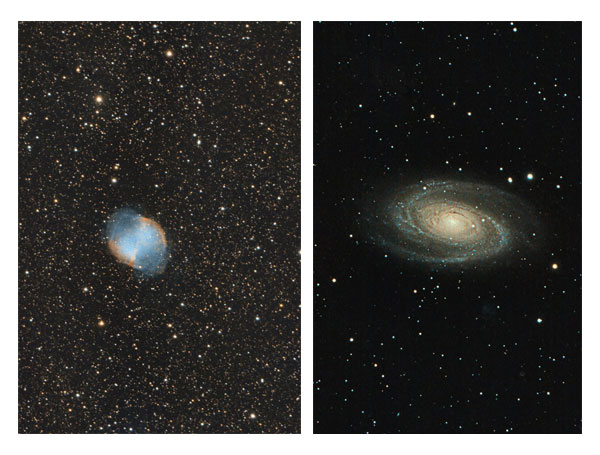
Messier 27
This photo is 20 x 180-second subs using the Hypercam 183C with matching dark frames subtracted. Captured in SharpCap using a TMB 130mm telescope.
Messier 81
This photo is 6 x 180-second subs using the Hypercam 183C. Captured in SharpCap using a TMB 130mm telescope.
Follow Gary Palmer’s Astrophotography Facebook Page.
A Color CMOS Camera from Altair
The Hypercam 183C uses a 20MP Sony IMX183 sensor. This sensor is used a number of astronomy cameras such as the QHY183C. The advantage Altair has against its competitors is the fantastic customer support and dedication to their customers.
With the built in ST4 port, the Hypercam 183C can also be used an autoguiding camera through a guide scope. I currently use the Altair GPCAM2 Mono AR130 for this purpose, so I will not be testing the Hypercam for autoguiding.
Software such as AltairCapture and SharpCap continue to deliver amazing results and are constantly updated and fine-tuned to enhance your imaging experience.
I have gotten to know the team at Altair over the past few months and they are the real deal. They stand behind their products and are true amateur astrophotographers at heart.
I already use the Altair GPCAM AR0130 / Starwave 50mm Autoguiding package and am very satisfied with the results I have been getting.
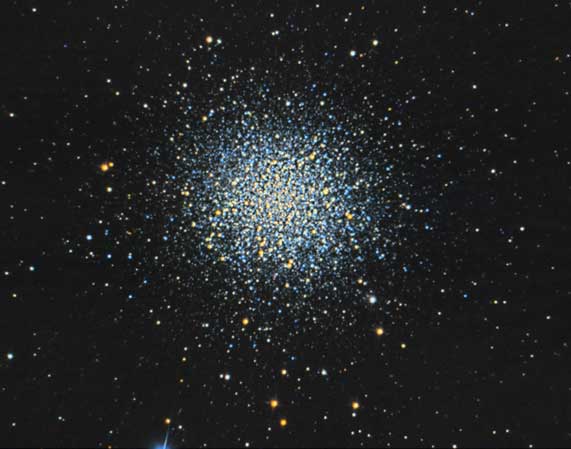
Impressive Features / Affordable Price
In a nutshell, the Altair Hypercam 183C is a 20 Megapixel astronomy camera with built in amp glow reduction and low read noise. This spec sheet for this camera states that it is capable of producing extremely smooth, detailed images.
Unlike the more expensive ASI071MC-Cool, the IMX183 CMOS camera does not include 2-stage TEC cooling. The difference this will make to my long exposure deep sky images is yet to be seen.
Over the next few weeks, I will put these claims to the test as I shoot a number of deep sky objects. Let’s take a look at some of the reasons DSLR astrophotographers should give this camera a good look:
Modified for astrophotography
Unlike a stock DSLR camera, the Hypercam does not have an IR cut filter that blocks red hydrogen wavelengths. This means that the images produced are similar to a DSLR camera that has been astro-modded.
Low Read Noise
The highly sensitive IMX183 CMOS sensor housed in the Hypercam boasts a wide dynamic range with a low dark current. I am very interested to see the noise levels from this camera when shooting on a hot summer night in the backyard.
Pixel Size for Refractors
The Hypercam was built for telescopes like mine. With a pixel size of 2.4um, and a sensor size of 16.5 x 12.61mm, this camera will perform best on F/7 refractors or faster. My ED102 is F/7 with a 0.8X reducer, making the Hypercam 183C a perfect match.
Hypercam 183C Specs
This information is directly from the manufacturer. For a good look at this Color CMOS camera in action, stay tuned to the AstroBackyard YouTube Channel.
- 1″ diagonal (15.86mm) SONY Exmor R Back Side Illuminated IMX183 Color CMOS sensor
- 20mp resolution with 5440 x 3648 active pixels in a 16.05mm x 12.61mm array
- Extremely low read noise
- Amp glow reduction technology onboard reduces amp glow, reduces noise, and increases contrast.
- High Dynamic Range with 12 bit ADC to 16bit output .FITS files in RAW mode
- Up to 17.5 Frames per second video in full 20mp resolution
Electronic Assisted Astronomy
Whether you are into visual observing or short exposure “lucky-imaging”, EAA (Electronic Assisted Astronomy) is becoming more popular each year. Products such as the Hypercam 183C or the Mallincam have changed the way we observe the night sky.
This camera is EAA friendly, meaning that video astronomy is well within its reach when using the Live Stacking feature in AltairCapture or SharpCap PRO.
This camera was primarily designed for multiple exposure deep sky imaging, rather than planetary astrophotography. This camera is outperformed by more inexpensive models for lunar and planet imaging.
New Astrophotography Images Coming…
Needless to say, I am anxiously awaiting the arrival of the Hypercam and to start capturing images in the backyard. With the New Moon phase approaching, the timing is perfect to start photographing some Spring Milky Way targets.
The plan is to shoot long exposures in the range of about 2-3 minutes using the new camera. I will attempt to control the camera using Astro Photography Tool and document my results. If you are looking to purchase a new imaging camera soon, my upcoming review of the Hypercam 183C may affect your decision!
To stay up to date with my experiences using the Altair Hypercam 183C please follow AstroBackyard on Facebook, and subscribe to my YouTube Channel to get notified when I release the video. Until next time, clear skies!
Looking to upgrade your astrophotography equipment? Be sure to check out the selection from my partner, Ontario Telescope and Accessories.
